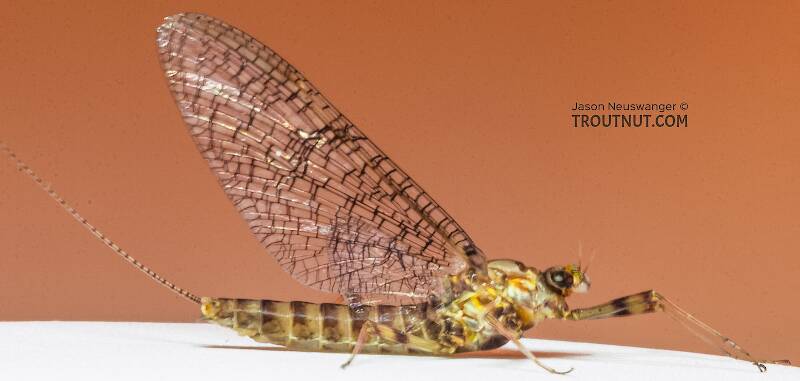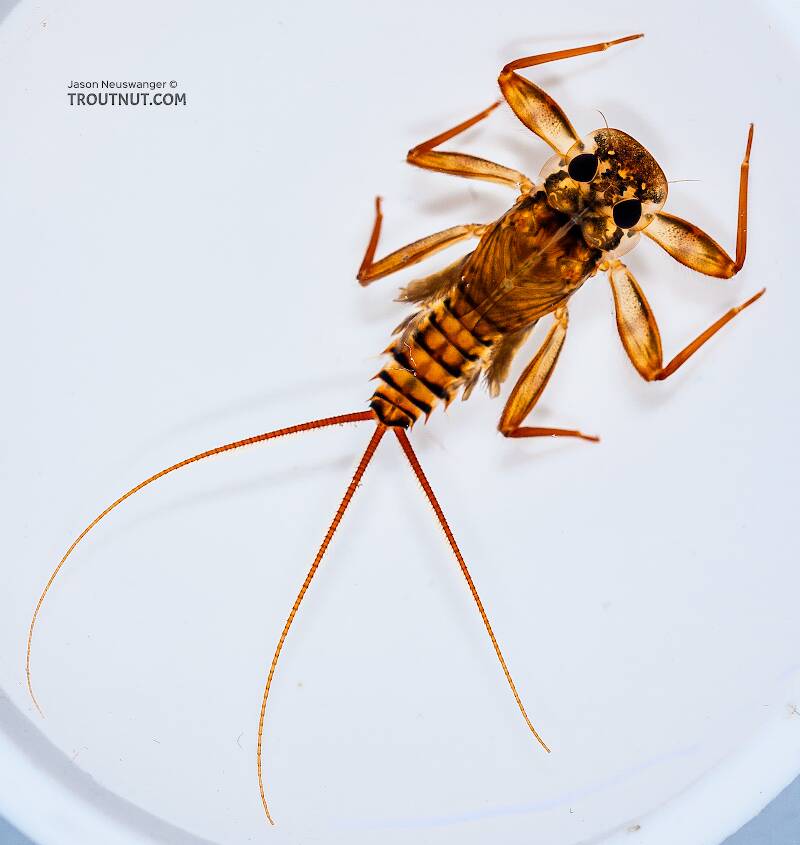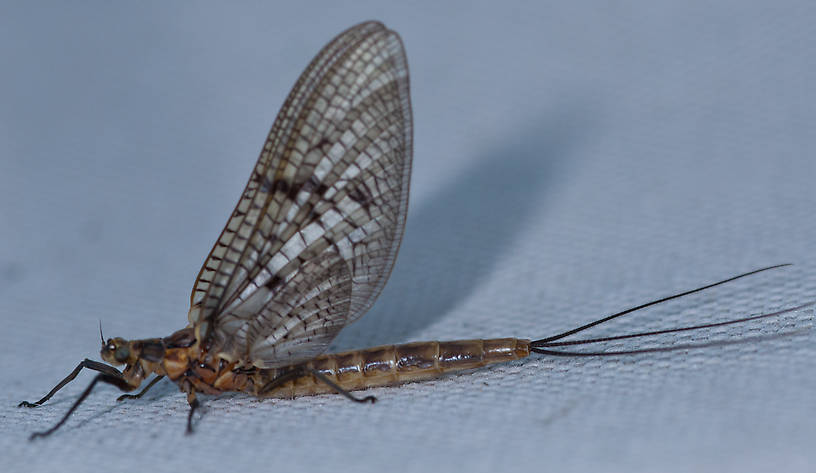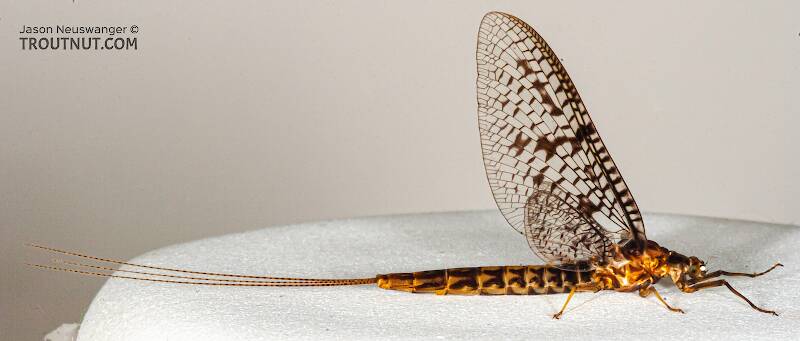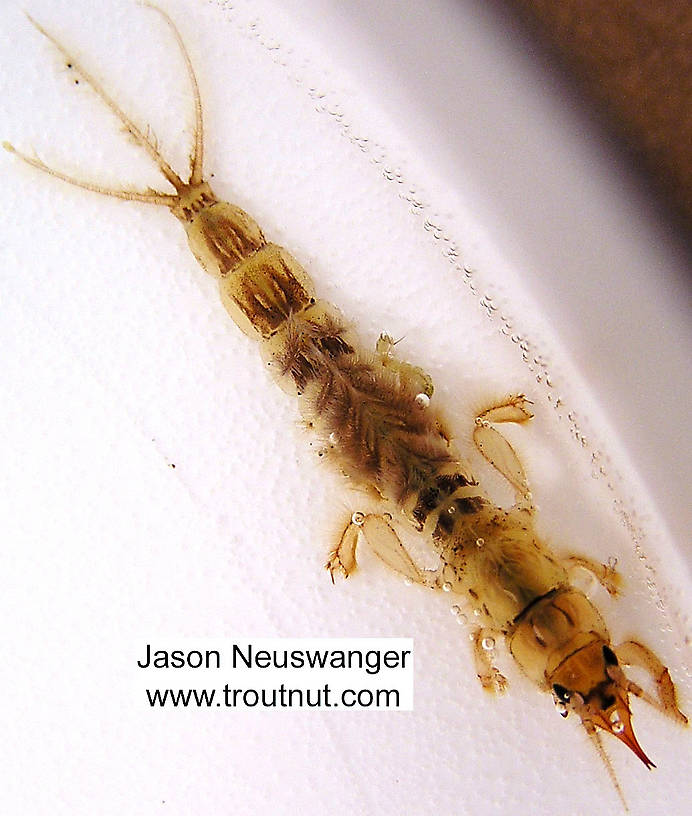
Salmonflies
Pteronarcys californica
The giant Salmonflies of the Western mountains are legendary for their proclivity to elicit consistent dry-fly action and ferocious strikes.
Featured on the forum

This one was surprisingly straightforward to identify. The lack of a sclerite at the base of the lateral hump narrows the field quite a bit, and the other options followed fairly obvious characteristics to Clostoeca, which only has one species, Clostoeca disjuncta.

Troutnut is a project started in 2003 by salmonid ecologist Jason "Troutnut" Neuswanger to help anglers and
fly tyers unabashedly embrace the entomological side of the sport. Learn more about Troutnut or
support the project for an enhanced experience here.
March Browns
Like most common names,"March Brown" can refer to more than one taxon. They're previewed below, along with 7 specimens. For more detail click through to the scientific names.
Mayfly Species Stenonema vicarium
These are pretty much always called March Browns.
In the East and Midwest this is one of the most important hatches of the Spring. They are large flies which emerge sporadically, making for long days of good fishing.
This species contains the two classic Eastern hatches formerly known as Stenonema vicarium and Stenonema fuscum, the "March Brown" and "Gray Fox." Entomologists have discovered that these mayflies belong to the same species, but they still display differences in appearance which the trout notice easily. Anglers should be prepared to imitate both types.
This species contains the two classic Eastern hatches formerly known as Stenonema vicarium and Stenonema fuscum, the "March Brown" and "Gray Fox." Entomologists have discovered that these mayflies belong to the same species, but they still display differences in appearance which the trout notice easily. Anglers should be prepared to imitate both types.
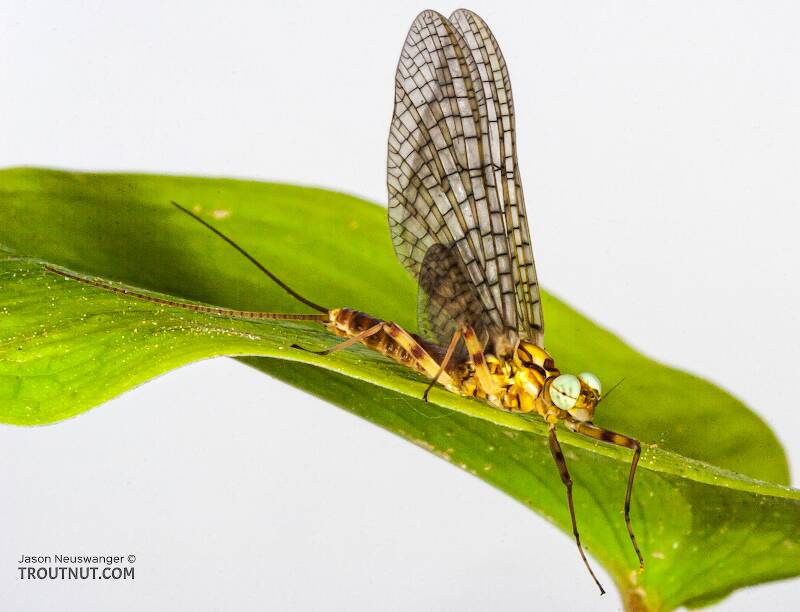
I collected this mayfly on the same trip as a female of the same species. After these photos it molted into a spinner. This is the form of Stenonema vicarium which anglers call the "Gray Fox."
See 17 more specimens...
Mayfly Species Ephemera simulans
These are sometimes called March Browns.
The Brown Drakes are a favorite hatch of many in the Midwest, and they make a good showing on localized waters across the country. They are usually the first in a series of big drakes which bring large trout to the surface at twilight and into the early hours of the night. The experience can be much like fishing the Hexagenia limbata hatch, except that the nymphs seem to emerge from slightly more wadeable, sandy bottoms instead of the boot-sucking mud underlying the best Hex water. It will draw big trout out from the depths of a big pool to feed in the shallow tailout after dark.
See 12 more specimens...
Mayfly Species Heptagenia pulla
These are very rarely called March Browns.
This elegant species may produce fishable hatches.
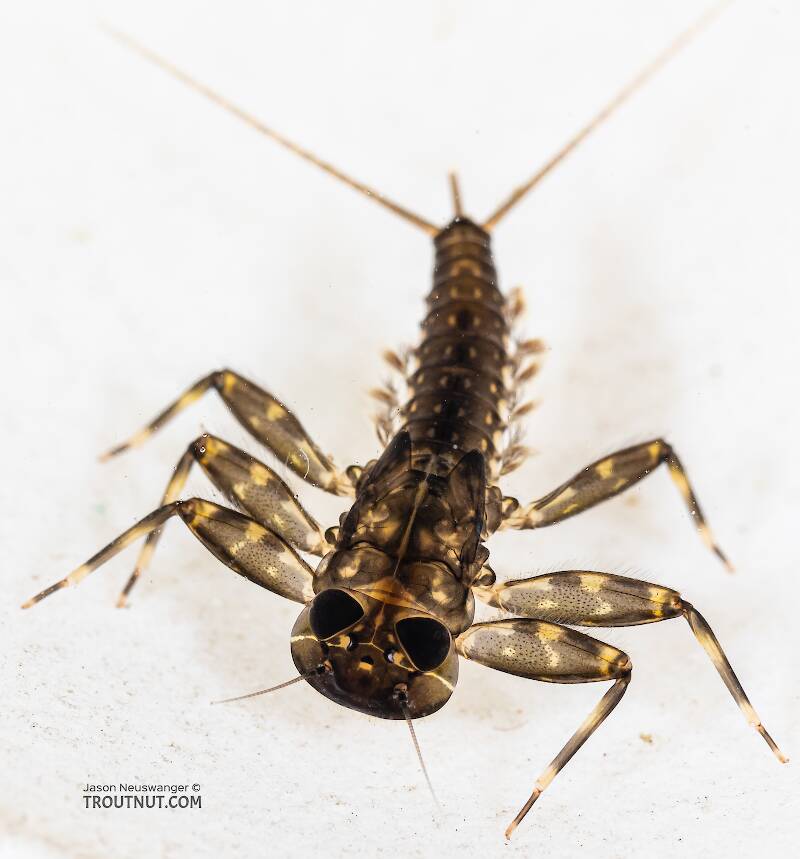
This specimen is interesting because Heptagenia pulla has not been reported from Washington or neighboring states (Saskatchewan is the closest), yet the distinctive key characteristics are clear. Furthermore, it might even be a species not listed on this site—Jacobus et al. (2014) writes, "the northern and western specimens of H. pulla may in fact be a synonym of the Palearctic species H. dalecarlica Bengtsson (Kjaerstad et al. 2012) and the true H. pulla may be restricted to eastern North America."
It keys to the genus Heptagenia because the tarsal claw has a single basal tooth, and the gills on segment 7 have fibrils.
For the species key in Jacobus et al. (2014):
1. The left mandible is planate, whereas the right mandible is angulate.
2. The labrum is much wider than long.
3. There's a thin light-colored streak lateral to the eye on the head.
It keys to the genus Heptagenia because the tarsal claw has a single basal tooth, and the gills on segment 7 have fibrils.
For the species key in Jacobus et al. (2014):
1. The left mandible is planate, whereas the right mandible is angulate.
2. The labrum is much wider than long.
3. There's a thin light-colored streak lateral to the eye on the head.
See 2 more specimens...
References
- Jacobus, L. M., Wiersema, N.A., and Webb, J.M. 2014. Identification of Far Northern and Western North American Mayfly Larvae (Insecta: Ephemeroptera), North of Mexico; Version 2. Joint Aquatic Science meeting, Portland, OR. Unpublished workshop manual. 1-176.


